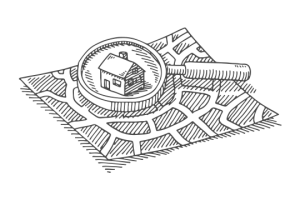Consumer debt is a pressing concern, one that isn’t going away. Research we published earlier this year highlighted that over one in three consumers (35%) have fallen into arrears due to outgoings rising above income; a 7% increase since we published the same research back in 2016.
As more consumers fall into arrears, debt collection procedures have become an increasingly part of the customer journey; with 70% of consumers stating they have experienced debt collection procedures, again a rise of 7% vs. 2016.
It’s natural that companies will place a focus on the immediate concern of recovering arrears, but what about the ongoing customer relationship? A mind-set focusing simply in on monies owed could actually cause more damage in the long term than just the arrears in question.
Concerningly 51% of consumers said they felt more negative about their service provider following poorly handled debt collection procedures – an increase of 12% since 2016! So, how can businesses ensure customer service remains front of mind in all customer interactions, including arrears management?
1. Break the negative stigma
Encouraging customers to open up about their circumstances should be a key aim of any collections activity, to support a balanced resolution that doesn’t stretch customers beyond their means. Worrying then that some customers could be put off from asking for help due to a perceived negative stigma.
In our research, 52% of consumers believed there is a negative stigma attached to asking for help when in debt. And, over 1/3 of these felt the negative stigma was due to poor practice deployed by businesses including aggressiveness, detachment, promotion of fear and guilt, and lifestyle judgements.
It’s crucial therefore that businesses invest in advisor training and empowerment that cover more than core collection skills, supporting employees to emphasise with customer circumstances and keep an open mind. An understanding approach can help customers open up, instead of being put off before engagement can really begin.
2. Consumer first
The current climate is leaving more and more consumers feeling the pinch. Collection teams need to factor this into how they approach collections; prioritising flexibility over rigid, internal processes.
This flexibility needs a joined-up approach between in-house teams and external debt collection agency partners; with shared accurate customer data facilitatating the right solution for the right customer at the right time.
Early referrals to customer support schemes is a must, but worryingly customer awareness of these schemes is very low as it stands. Just 32% of consumers were aware of the possibility of flexible payment plans, 28% knew of signposting to debt charities and 10% were aware of priority service registers.
3. Balancing collections and customer service
Today’s collections agents need more than core debt collection skills. As they are frequently required to deal with challenging and difficult circumstances, they need to be sensitive customer needs; using customer service skills to take an empathetic and understanding approach to interactions.
Sadly, 60% of consumers in our research didn’t feel valued as a customer throughout the debt collection process, up from 48% in 2016. This simply highlights once again the need for a customer-centric approach, infused with practices and procedures that enable, not block, meaningful change.
Choosing not to take this on-board can lead to further damage and arrears. For example, 8% of consumers we surveyed said they would simply withhold payment longer should they experience poor collections practice; leading to a rise in ‘protest debt’.
4. Focusing on the customer
The collections industry has without doubt made large strides towards becoming more customer-centric. However, our research indicates that consumers feel there is still so much more to do. When you consider that trust in brands is waning, the lifetime value of the consumer needs to be front of mind throughout the customer journey – from acquisition right through to collections.
There is a clear link between how organisations treat customers in arrears, and the impact this has upon brand loyalty, advocacy and reputation. Reflecting on current practice and truly placing customers at the heart of debt collection operations can really help minimise the impact of arrears on a company and its customer relationships.
Lloyd Birkhead, Managing Director






